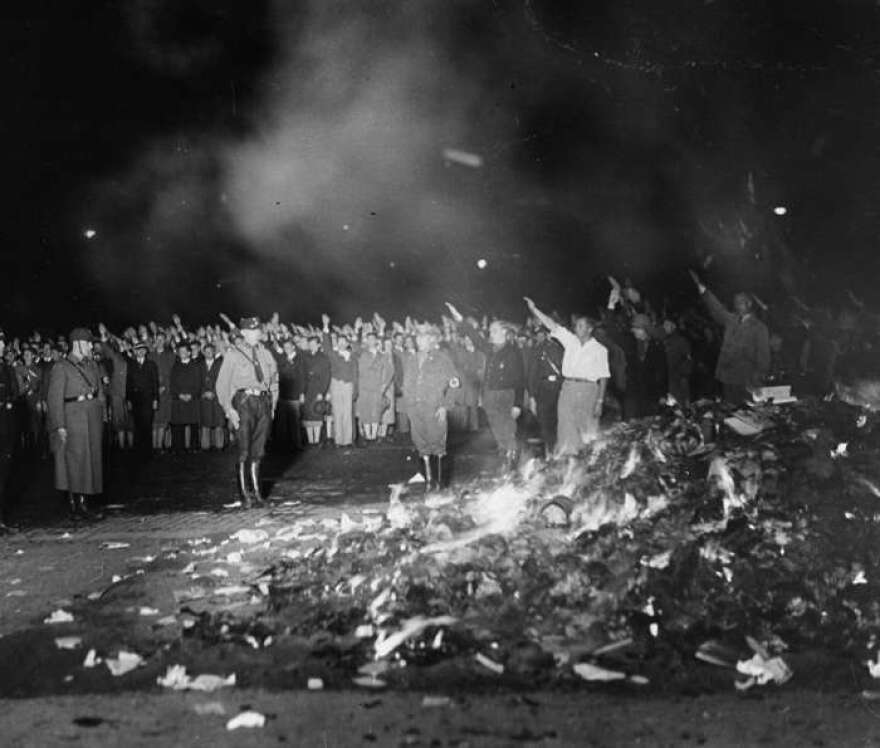It's the last day of Banned Books Week, when American Library Association calls attention to the freedom we have to read what we want. An exhibition at the Dallas Holocaust Museum reminds us that freedom hasn’t always existed in the world, and it's still being challenged here.
The traveling museum exhibition, which was created by the U.S. Holocaust Memorial Museum, is called "Fighting the Fires of Hate: America and the Nazi Book Burnings." With photographs, posters, newspapers and film footage, the exhibition looks back at the 30s. But it also follows book burning from The Cold War to the present day.
"The significance of having an exhibit like this in Dallas is to bring home the fact that freedom and democracy are fragile,"says Sarah Abosch, the Senior Director of Education at the Dallas Holocaust Museum. "This fragility is something that we have to be very, very aware of. The Nazis didn't initiate book burning, and unfortunately, book burning did not end with the Nazis."
Book burning did not start in Nazi Germany. It dates back to antiquity. But burning books became a lot more common just before and during World War II. The Nazis burned more than 25,000 books across Germany in a single day, May 10, 1933. At the same time, Americans in the U.S. gathered to protest the burning.
Book burning still happens around the world, says Abosch. But here in the U.S., bans are much more common. Those who want to restrict access to books usually do it because they say they want to protect children from sexual content, language or situations considered inappropriate or offensive. The American Library Association says that in the last 30 years more than 11,000 books have been challenged in an attempt to remove them from classrooms or libraries. The list includes such titles as The Absolutely True Diary of a Part-Time Indian by Sherman Alexie, Looking For Alaska by John Green, and Captain Underpants by Dav Pilkey.
Many people say that banning or even challenging a book violates the First Amendment.
"You should have access to anything and everything that you could possibly want to read, to the extent that if we have censorship in the American public, it should be self censorship," says Abosch.
In Nazi Germany, works by Helen Keller, Ernest Hemingway, and Sigmund Freud went up in flames – in bonfires surrounded by thousands of cheering people.
In the 1950s, Senator Joseph McCarthy called for the removal of books from the US overseas library program, books he deemed too left-leaning. His call was answered with book burnings in places like Australia and Japan. Even the Harry Potter books aren’t safe. In the early 2000s groups burned the Harry Potter books, not abroad, but in New Mexico.
You can see the exhibition at the Dallas Holocaust Museum through October 15th. Visit the Dallas Holocaust Museum's website for more information.



